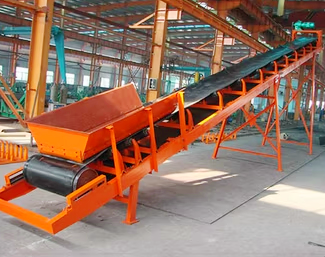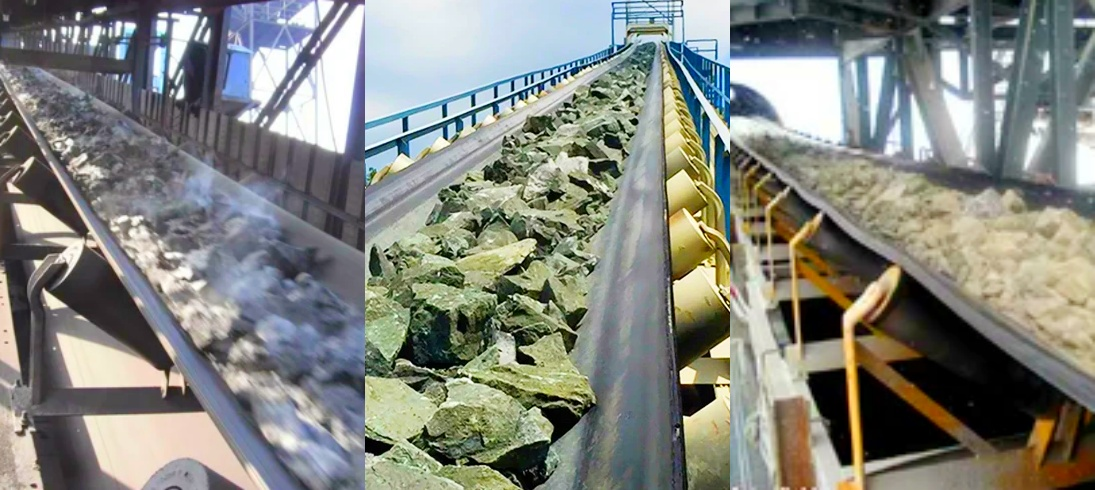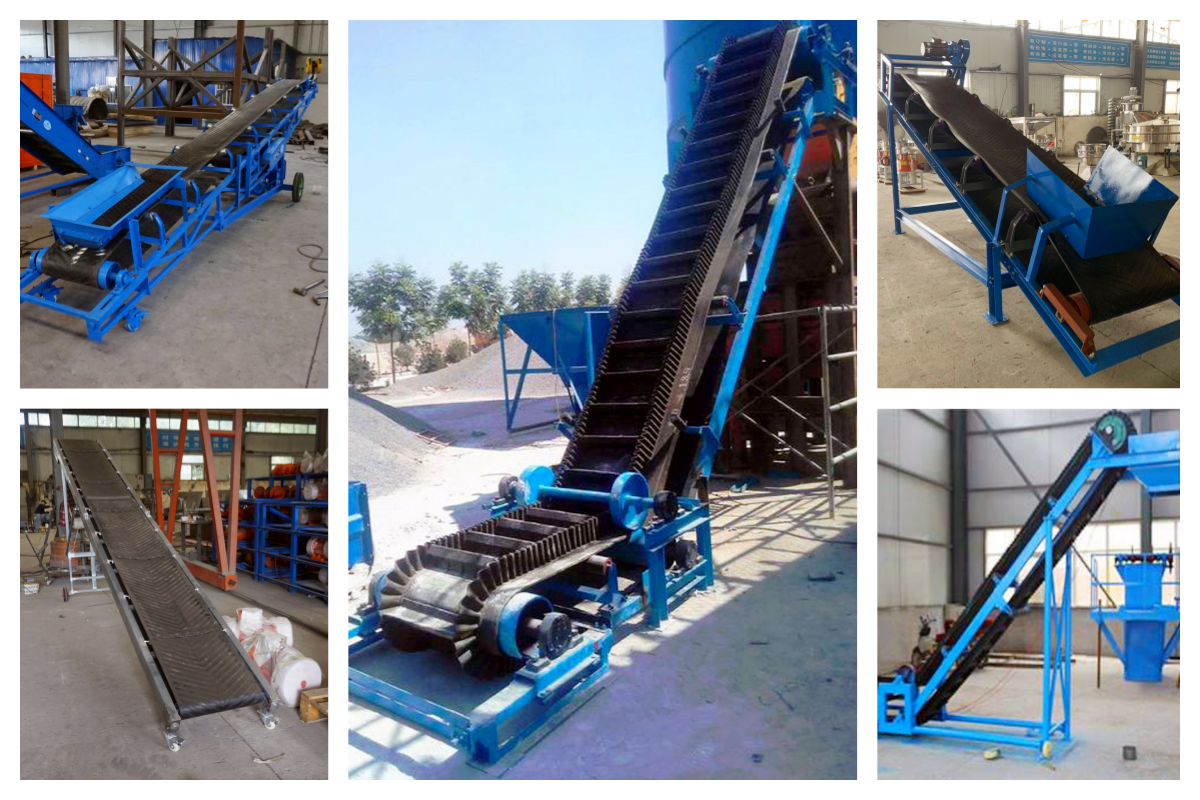Due to its strong abrasiveness, uneven particle size and humidity changes, limestone has high requirements for rubber conveyor belts. Rubber conveyor belt for limestone not only have excellent wear resistance to resist the continuous wear of the belt surface by the material, but also have excellent sealing. The conveyor belt needs to adapt to limestone materials of different particle sizes to ensure that the material can be transported stably and not easily scattered at various inclination angles and conveying volumes, so as to achieve efficient and low-loss transportation effects.

The three-layer structure design (upper cover rubber, belt core, lower cover rubber) has excellent impact resistance and interlayer adhesion, suitable for conveying block or powdered limestone. In industries such as cement and mining, this conveyor belt can effectively cope with the abrasion and weight of limestone, ensuring conveying efficiency and stability.
|
Features |
PVC limestone conveyor belt |
Rubber conveyor belt for limestone |
|
Picture |
|
|
|
Material |
Polyvinyl chloride (PVC), lightweight, synthetic material |
Natural or synthetic rubber, combined with fabric or steel wire core |
|
Abrasion resistance |
Medium, suitable for lightly abrasive limestone |
High, suitable for highly abrasive limestone |
|
Heat resistance |
General, up to 70℃, not suitable for high temperature |
Excellent, resistant to 50℃-150℃ (heat resistant type) |
|
Chemical resistance |
Good acid and alkali resistance, suitable for humid or chemical environments |
Acid and alkali resistant or oil resistant models can be customized depending on the formula |
|
Strength |
Medium, suitable for short distances , light load |
high, suitable for long distance, heavy load |
|
Applicable scenarios |
small mines, light limestone transportation |
large mines, cement plants, heavy limestone transportation |
|
Main applications |
mainly used for light and medium loads, limestone with low wear requirements, or certain requirements for cleanliness |
widely used for heavy load, long distance, high wear, large block limestone transportation |

In the process of limestone transportation, it is often faced with strong wear and impact problems caused by high material hardness, large particles and sharp edges, which can easily cause scratches, tears and even early damage to the conveyor belt surface. In addition, the limestone transportation environment is often accompanied by dust, humidity and other factors, which further aggravates the loss of conveying equipment.
In response to the above challenges, rubber conveyor belts effectively respond with their excellent wear resistance, tear resistance and buffering performance. Its highly wear-resistant rubber covering layer can significantly reduce the wear of limestone particles on the belt surface and extend its service life; the multi-layer fabric or steel wire reinforcement structure improves the overall tensile strength and impact resistance, preventing the material from being pressed through or the belt body from breaking; at the same time, the rubber material has good adhesion and anti-skid properties, which can ensure that the limestone is not easy to slip during the transportation process, ensuring the transportation efficiency and safety. Therefore, rubber conveyor belts have become an ideal choice for efficient and stable transportation of limestone.
|
Model |
Belt width (mm) |
Thickness (mm) |
Maximum load (kg/m²) |
Characteristics |
|
DH-1000 |
500 |
5 |
1000 |
High wear resistance, suitable for light limestone |
|
DH-1500 |
600 |
6 |
1500 |
High temperature resistance, suitable for high temperature environment |
|
DH-2000 |
800 |
8 |
2000 |
High strength, suitable for heavy load transportation |
|
DH-2500 |
1000 |
10 |
2500 |
Tear resistance, suitable for harsh conditions |
|
DH-3000 |
1200 |
12 |
3000 |
Super wear resistance, suitable for long distance transportation |

Rubber conveyor belt for limestone is widely used in many industries, especially in heavy industrial fields such as mining, quarrying, cement manufacturing, and building materials production. It plays a vital role. Its main purpose is to efficiently and stably transport limestone from the mining point to the processing area or storage location, such as transporting the raw stone from the open pit to the crusher, and then from the crusher to the next process or directly to the storage warehouse.
In the cement production process, this conveyor belt is not only used for the initial transportation of raw limestone, but also for the transportation of materials in subsequent stages, including the transportation of clinker. In addition, in the steel and metallurgical industry, limestone is used as a flux to remove impurities, and rubber conveyor belts also ensure the smooth supply of this key material. Its excellent wear resistance, impact resistance and ability to adapt to different environments make rubber conveyor belts for limestone an indispensable part of continuous and large-scale production lines, effectively improving the efficiency and economic benefits of the entire production process.
Since these working conditions are mostly heavy loads, large particle sizes, long distances, and continuous operation, rubber conveyor belts for limestone rely on their excellent wear resistance, impact resistance, and high temperature resistance to ensure the stable and efficient transportation of materials in harsh environments.

For limestone, a material that is usually abrasive and has a certain size, rubber conveyor belts are the first choice for most limestone conveying applications due to their excellent wear resistance, impact resistance, high tensile strength and wide temperature adaptability. Through reasonable design and material selection, rubber conveyor belts not only improve the efficiency of limestone transportation, but also enhance the reliability of the overall system, thus providing strong support for the sustainable development of the limestone industry.